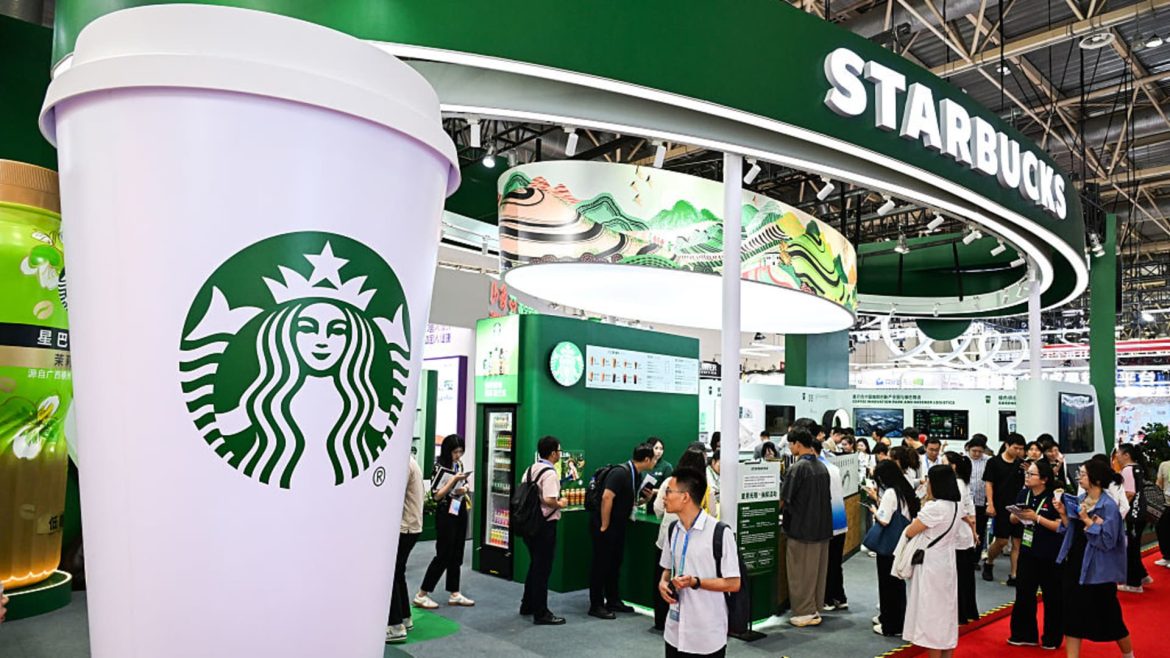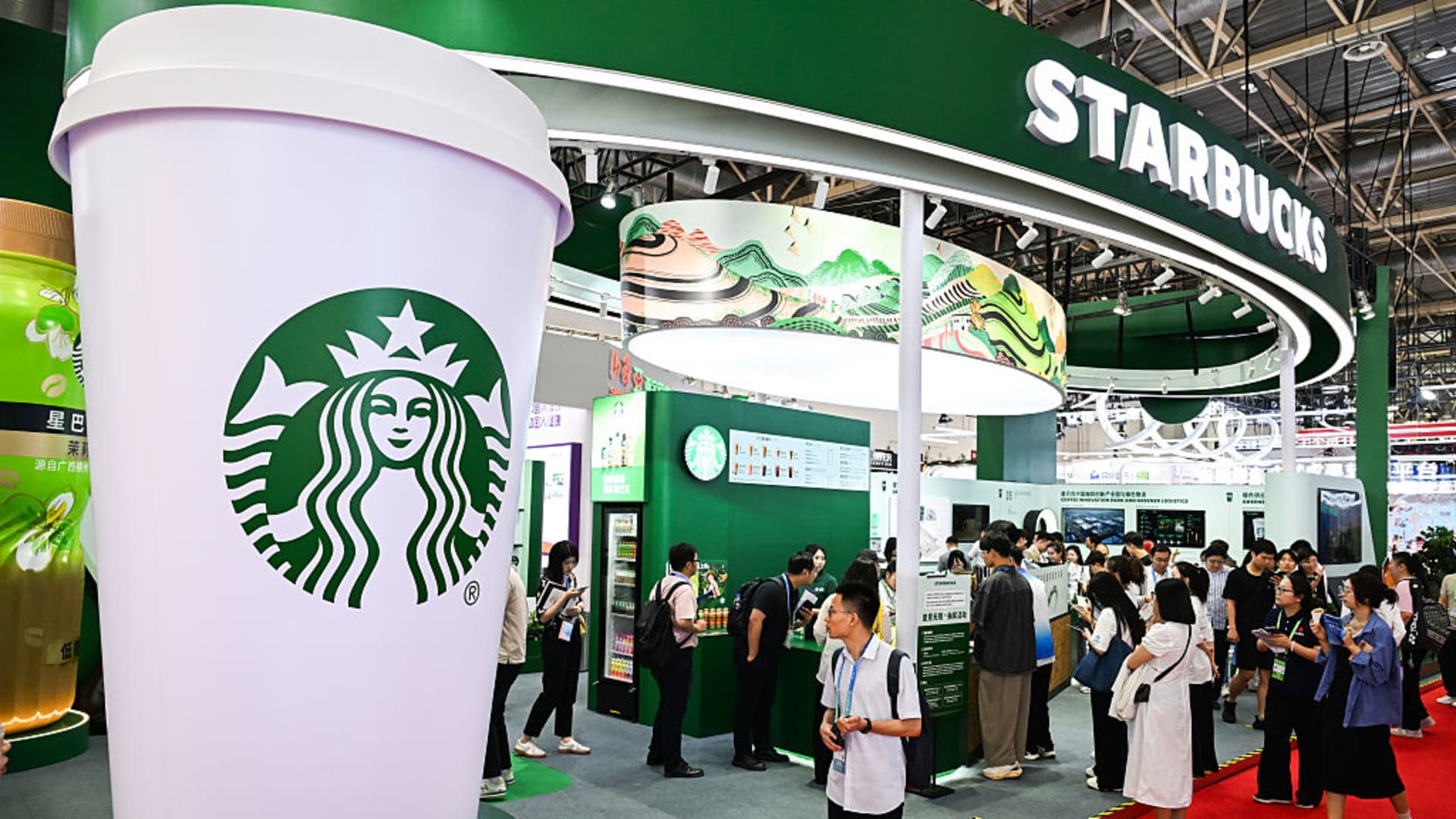Decoding Premarket Movers: A Deep Dive into Starbucks, Peloton, Novo Nordisk, and Mondelez
Introduction: The Premarket Pulse
The premarket trading session serves as a critical barometer for investor sentiment, offering early insights into how stocks might perform during the regular trading day. This period, often driven by overnight news, earnings reports, and analyst actions, can set the tone for the entire market. By examining the premarket movements of Starbucks, Peloton, Novo Nordisk, and Mondelez, we can uncover the specific factors influencing these companies and gain a broader understanding of market dynamics.
Starbucks: Brewing a Turnaround Story
Starbucks’ premarket surge, exceeding 4%, was a testament to the power of strategic leadership and effective execution. CEO Brian Niccol’s optimistic remarks about the company’s turnaround plan resonated with investors, signaling that the coffee giant was on the right track. The fiscal third-quarter revenue of $9.5 billion, surpassing the LSEG consensus estimate of $9.31 billion, further validated this sentiment.
The market’s favorable reaction to Starbucks’ performance highlights several key points. First, it underscores the importance of clear communication from company leadership. Niccol’s remarks provided a roadmap for investors, helping them understand the company’s trajectory and potential for growth. Second, the revenue beat demonstrates the effectiveness of Starbucks’ turnaround strategies, which likely include a focus on digital innovation, streamlined operations, and enhanced customer experiences.
Moreover, Starbucks’ success in the premarket session suggests that investors are increasingly valuing companies that can deliver consistent results, even in a challenging economic environment. The coffee chain’s ability to navigate post-pandemic consumer behavior shifts and maintain its competitive edge is a positive sign for the broader market.
Peloton: The Struggle for Relevance
In stark contrast to Starbucks, Peloton faced a challenging premarket session, with shares plummeting around 6.4%. The company’s larger-than-expected quarterly loss of 44 cents per share on revenue of $595.5 million was a significant blow to investor confidence. Analysts had anticipated a loss of 34 cents per share on revenue of $591 million, making the actual results even more disappointing.
Peloton’s tepid holiday forecast further dampened investor enthusiasm, painting a concerning picture of the company’s financial health. The combination of disappointing earnings, a lackluster outlook, and leadership changes raises serious questions about Peloton’s long-term viability. The company’s struggles highlight the challenges faced by businesses that fail to adapt to changing consumer preferences and evolving market conditions.
Adding to Peloton’s woes, the announcement that CEO Barry McCarthy would step down as the company seeks a permanent replacement underscores the leadership turmoil within the organization. The restructuring plan involving a 15% workforce reduction, impacting approximately 400 employees, signals a desperate attempt to cut costs and refocus the business. Once a pandemic darling, Peloton’s shares have slid considerably, reflecting a loss of investor confidence and raising concerns about the company’s ability to rebound.
Novo Nordisk: Navigating Uncertainty
Novo Nordisk’s premarket activity presents a mixed bag of news, reflecting the complexities of the pharmaceutical industry. Reports indicate a potential cut to the company’s 2025 guidance, leading to a stock plummet. This suggests that investors are sensitive to any indications of slowing growth or decreased profitability for the pharmaceutical giant.
However, other reports mention Novo Nordisk alongside Starbucks and Mondelez as companies making significant premarket moves, without specifying the direction or magnitude of those movements. The lack of consistent information makes it challenging to draw definitive conclusions about Novo Nordisk’s premarket performance and the underlying factors driving it.
The uncertainty surrounding Novo Nordisk highlights the importance of transparency and clear communication in maintaining investor confidence. In the pharmaceutical sector, where innovation and regulatory approvals play a crucial role, any hint of slowing growth or decreased profitability can have a significant impact on stock prices. Further investigation into the specific details of the revised guidance and its potential impact on revenue and earnings is needed to fully understand the market’s reaction.
Mondelez: The Power of Stability
Mondelez, the company behind iconic snack brands like Oreo and Ritz, appears to be maintaining a relatively stable position. Reports indicate that Mondelez reiterated its guidance, suggesting that the company remains confident in its financial outlook and its ability to meet its targets. This stability can be reassuring to investors, particularly in times of market volatility and economic uncertainty.
By reaffirming its guidance, Mondelez signals its commitment to delivering consistent results and maintaining its competitive edge in the global snacks market. This approach can foster investor confidence and contribute to the company’s long-term success. In an industry where consumer preferences can shift rapidly, Mondelez’s ability to maintain stability and consistency is a testament to its strong brand portfolio and effective business strategies.
Broader Market Implications
The premarket movements of these four companies offer valuable insights into the broader market dynamics and investor sentiment. Starbucks’ positive performance suggests that companies with strong turnaround plans and solid financial results can still thrive, even in a challenging economic environment. Peloton’s struggles, on the other hand, underscore the risks associated with companies that fail to adapt to changing consumer preferences and evolving market conditions.
The uncertainty surrounding Novo Nordisk highlights the importance of transparency and clear communication in maintaining investor confidence. Finally, Mondelez’s steady course demonstrates the value of stability and consistent performance in a volatile market. These insights can help investors make more informed decisions and enhance their chances of success in the dynamic world of stock trading.
The Premarket as a Crystal Ball: Limitations and Opportunities
While premarket activity can offer hints about the day’s trading, it’s crucial to acknowledge its limitations. Premarket trading volume is typically lower than during regular market hours, which can amplify price movements and lead to false signals. News and events released overnight may not fully reflect the overall sentiment once the market opens and a larger pool of investors participates.
However, the premarket offers opportunities for informed investors. By staying abreast of overnight news, earnings releases, and analyst ratings, traders can gain an early advantage and potentially capitalize on price movements. Analyzing premarket movers can help identify emerging trends, gauge investor sentiment, and refine trading strategies for the day ahead.
Conclusion: Decoding the Signals
The premarket performances of Starbucks, Peloton, Novo Nordisk, and Mondelez illustrate the complex interplay of factors that influence stock prices. From successful turnaround strategies to disappointing earnings reports, each company’s premarket activity reflects its unique circumstances and its ability to navigate the ever-changing market landscape.
By carefully analyzing these signals and understanding the underlying drivers, investors can make more informed decisions and enhance their chances of success in the dynamic world of stock trading. The premarket session serves as a valuable tool for gaining early insights into market trends and investor sentiment, but it should be used in conjunction with other analysis methods to form a comprehensive trading strategy. In the end, the ability to decode these signals and adapt to changing market conditions is what separates successful investors from the rest.





